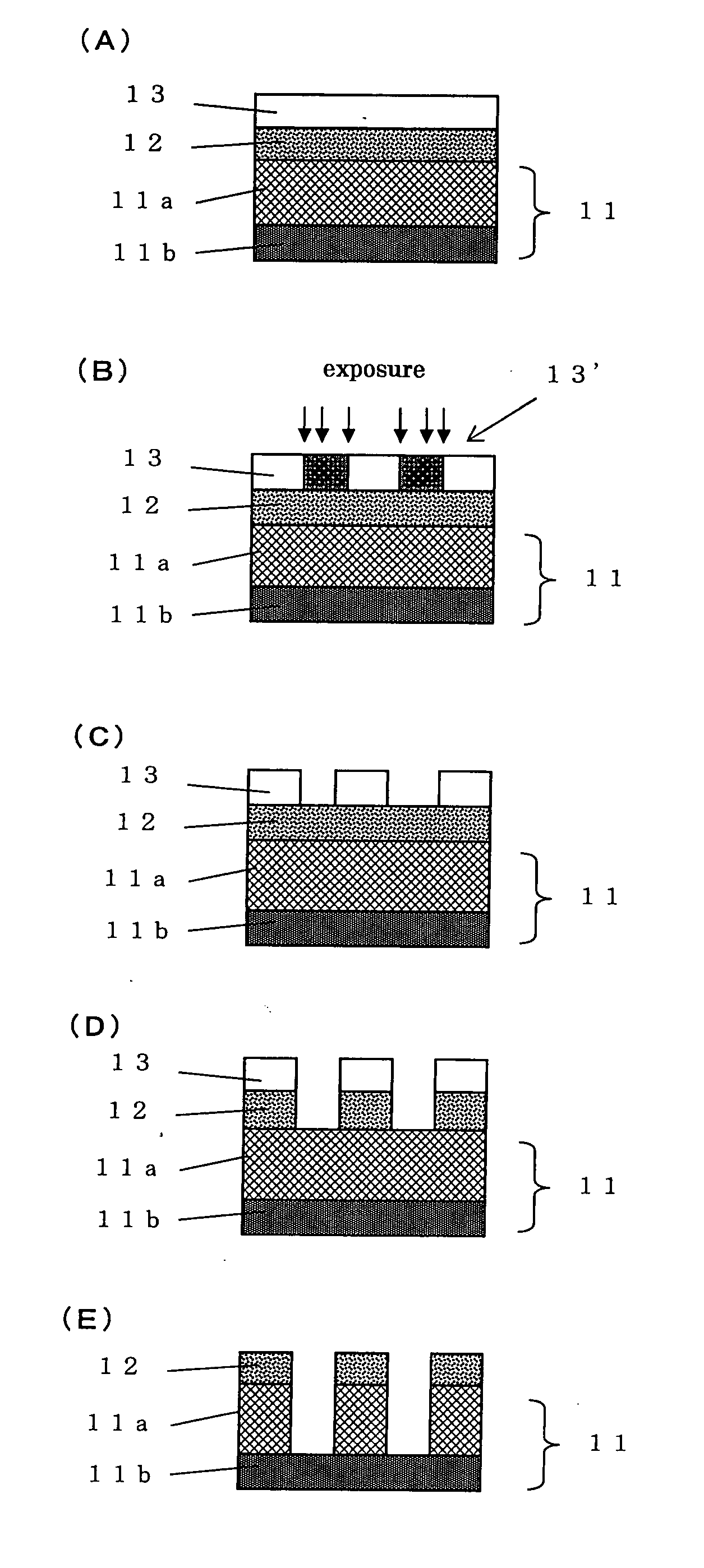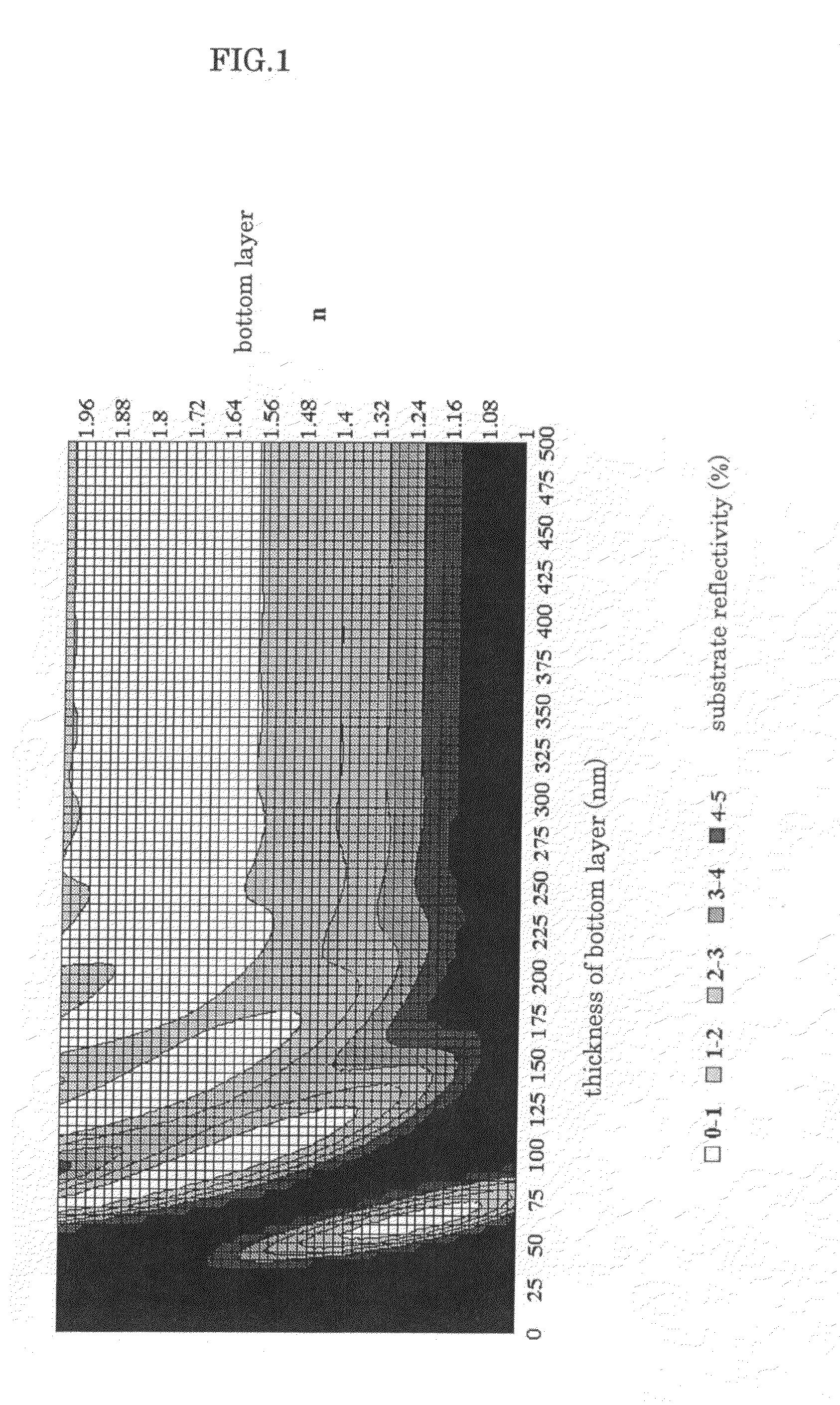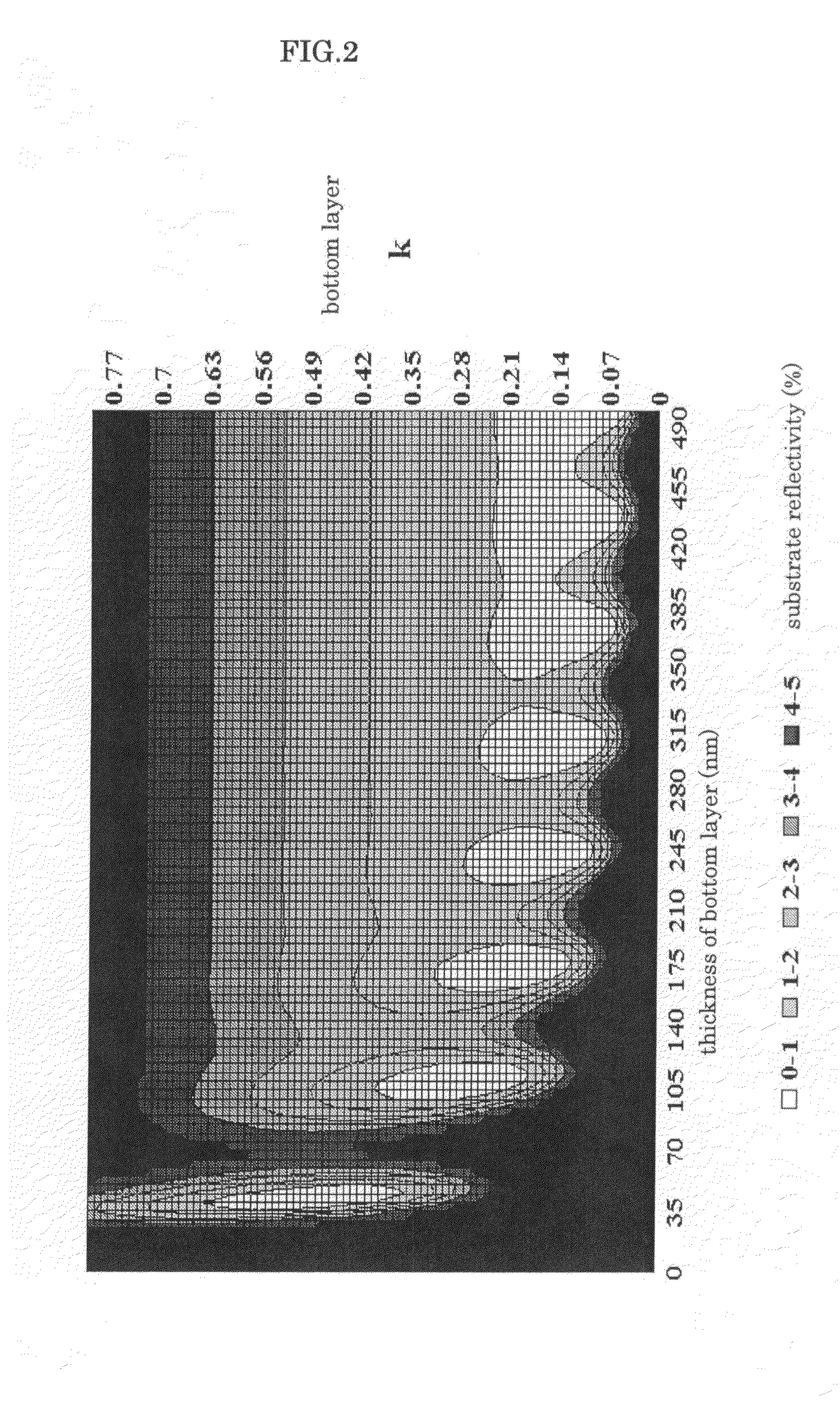Bottom resist layer composition and patterning process using the same
a technology of bottom resist and composition, applied in the direction of photosensitive materials, instruments, photomechanical equipment, etc., can solve the problems of difficult to transfer resist patterns having a thickness equal or less than 100 nm to a silicon-containing intermediate resist layer, acrylates exhibit lower etching resistance, and increase surface roughness after etching, etc., to achieve excellent etching resistance, high resolution, and patterned more accurately
- Summary
- Abstract
- Description
- Claims
- Application Information
AI Technical Summary
Benefits of technology
Problems solved by technology
Method used
Image
Examples
synthetic example 1
[0222]To a 200 mL flask were added 6.1 g of 2,5-norbornadiene-2-hydroxymethyl, 4.6 g of 2,5-norbornadiene and 10 g of toluene as a solvent. This reaction vessel was cooled to −70° C. under nitrogen atmosphere, and then degasing under reduced pressure and nitrogen blowing were repeated 3 times. After the temperature was elevated to room temperature, 2.4 g of AIBN was added as a polymerization initiator, then the temperature was elevated to 80° C. and a reaction was conducted for 24 hours. This reaction solution was concentrated to half, and precipitated in a mixed solution of 300 mL of methanol and 50 mL of water. Thus obtained white solid was filtered, dried under a reduced pressure at 60° C. to obtain a white polymer.
[0223]The obtained polymer was analyzed by 13C, 1H-NMR and GPC measurement, and the following results were obtained.
[0224]Copolymerization ratio (mole ratio)
[0225]2,5-norbornadiene-2-hydroxymethyl: 2,5-norbornadiene=0.5:0.5
[0226]Weight-average molecular weight (Mw)=6,8...
synthetic example 2
[0229]To a 200 mL flask were added 5.4 g of 2,5-norbornadiene-2-carboxylic acid, 5.5 g of 2,5-norbornadiene and 10 g of toluene as a solvent. This reaction vessel was cooled to −70° C. under nitrogen atmosphere, and then degasing under reduced pressure and nitrogen blowing were repeated 3 times. After the temperature was elevated to room temperature, 2.4 g of AIBN was added as a polymerization initiator, then the temperature was elevated to 80° C. and a reaction was conducted for 24 hours. This reaction solution was concentrated to half, and precipitated in a mixed solution of 300 mL of methanol and 50 mL of water. Thus obtained white solid was filtered, dried under a reduced pressure at 60° C. to obtain a white polymer.
[0230]The obtained polymer was analyzed by 13C, 1H-NMR and GPC measurement, and the following results were obtained.
[0231]Copolymerization ratio (mole ratio)
[0232]2,5-norbornadiene-2-carboxylic acid:2,5-norbornadiene=0.4:0.6
[0233]Weight-average molecular weight (Mw)=...
synthetic example 3
[0236]To a 200 mL flask were added 8.5 g of 2,5-norbornadiene-2-carboxylic acid, 4.3 g of indene and 10 g of toluene as a solvent. This reaction vessel was cooled to −70° C. under nitrogen atmosphere, and then degasing under reduced pressure and nitrogen blowing were repeated 3 times. After the temperature was elevated to room temperature, 2.4 g of AIBN was added as a polymerization initiator, then the temperature was elevated to 80° C. and a reaction was conducted for 24 hours. This reaction solution was concentrated to half, and precipitated in a mixed solution of 300 mL of methanol and 50 mL of water. Thus obtained white solid was filtered, dried under a reduced pressure at 60° C. to obtain a white polymer.
[0237]The obtained polymer was analyzed by 13C, 1H-NMR and GPC measurement, and the following results were obtained.
[0238]Copolymerization ratio (mole ratio)
[0239]2,5-norbornadiene-2-carboxylic acid indene=0.7:0.3
[0240]Weight-average molecular weight (Mw)=5,400
[0241]Molecular-w...
PUM
| Property | Measurement | Unit |
|---|---|---|
| wavelength | aaaaa | aaaaa |
| reflectivity | aaaaa | aaaaa |
| thickness | aaaaa | aaaaa |
Abstract
Description
Claims
Application Information
 Login to View More
Login to View More - R&D
- Intellectual Property
- Life Sciences
- Materials
- Tech Scout
- Unparalleled Data Quality
- Higher Quality Content
- 60% Fewer Hallucinations
Browse by: Latest US Patents, China's latest patents, Technical Efficacy Thesaurus, Application Domain, Technology Topic, Popular Technical Reports.
© 2025 PatSnap. All rights reserved.Legal|Privacy policy|Modern Slavery Act Transparency Statement|Sitemap|About US| Contact US: help@patsnap.com



